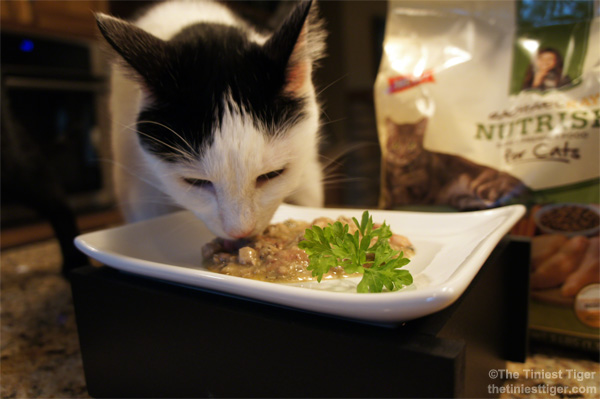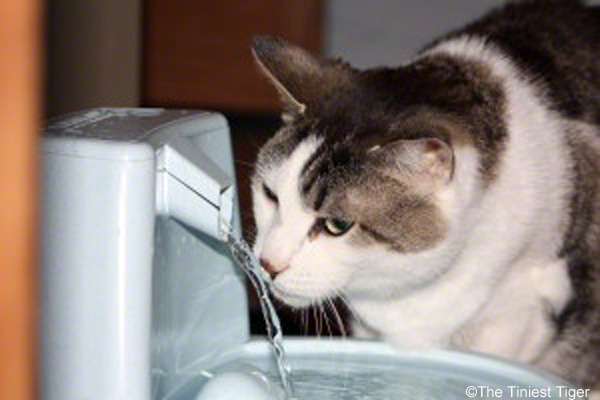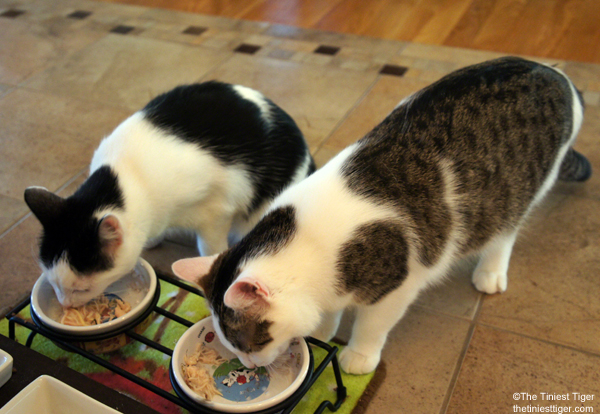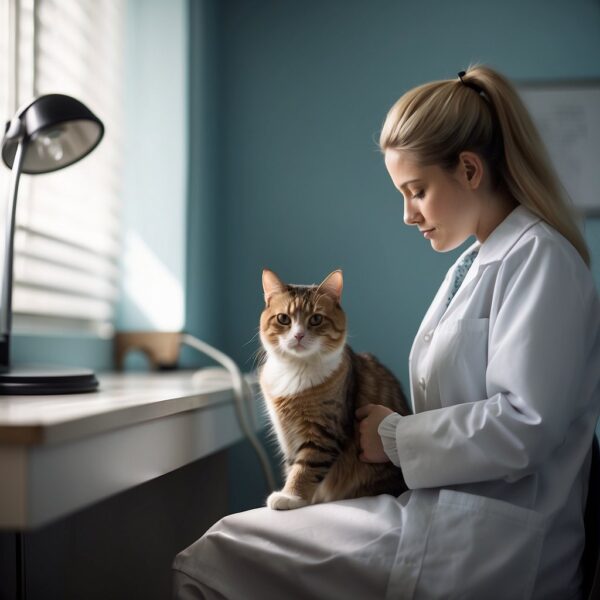
Cat Digestive System: Gastrointestinal Health
The cat’s digestive system is a unique assembly of organs designed to process and absorb nutrients from their typically carnivorous diet. An understanding of this system is crucial in maintaining the health and well-being of domestic cats. Structurally, it is an uncomplicated system when compared to those of omnivorous animals, but it is highly specialized to suit the cat’s dietary needs. For example, a cat’s mouth, with its sharp premolars and molars, is adapted for shearing meat, and its digestive tract efficiently handles proteins and fats from animal tissues.
Several common disorders can affect a cat’s digestive system, including pancreatitis, which involves inflammation of the pancreas and can affect cats and dogs alike. Symptoms of such disorders often require careful diagnosis given the digestive system’s complexity and the potential for various ailments to present with similar signs. To ensure the health of a cat’s digestive system, regular veterinary check-ups, appropriate diet management, and awareness of digestive irregularities by cat parents are essential. Familiarity with the anatomy and physiology of the system aids in understanding the basics of treatment and the necessity of specific nutritional requirements.
Key Takeaways
- The cat’s digestive system is adapted to a carnivorous diet and is less complex than that of omnivores.
- Disorders like pancreatitis are common and require careful diagnosis due to similar symptoms across various conditions.
- Regular veterinary visits and awareness of digestive health are critical for maintaining good health in cats.
Anatomy of the Cat’s Digestive System
The cat’s digestive system is a specialized tract consisting of several key organs that work in concert to process food, extract and absorb nutrients, and expel waste. The teeth and saliva in the mouth commence digestion, followed by the passage of food through the esophagus to the stomach where it is further broken down. The liver and pancreas contribute essential digestive enzymes and bile, while the intestines complete the absorption process before waste materials are expelled through the rectum and anus.
Mouth and Teeth
The mouth of a cat contains sharp teeth and saliva that initiate the digestive process. The teeth are adapted for tearing flesh, reflecting their carnivorous diet, and the tongue aids in manipulating food.
- Saliva: Provides lubrication and begins the breakdown of food
- Teeth: Designed to efficiently cut and grind meat
Esophagus and Stomach
The esophagus is a muscular tube that transports chewed food to the stomach. In the stomach, hydrochloric acid and digestive enzymes break down food, turning it into a semi-liquid substance called chyme.
- Esophagus: Moves food via peristalsis
- Stomach: Employs acid and enzymes for digestion
Liver and Pancreas
The liver and pancreas are critical for digestion and absorption. The liver produces bile needed for fat emulsification, while the pancreas secretes a myriad of digestive enzymes to further break down proteins, fats, and carbohydrates into absorbable units.
- Liver: Produces bile to assist in fat digestion
- Pancreas: Generates digestive enzymes crucial for nutrient breakdown
Intestines
The small intestine, including the duodenum, is the primary site for absorption of nutrients. It is where most amino acids and fatty acids are absorbed. The large intestine reabsorbs water and electrolytes, transforming liquid waste into feces.
- Small Intestine: Digests food and absorbs nutrients
- Large Intestine: Absorbs water and forms feces
Rectum and Anus
The rectum stores feces before elimination. The anus is the final part of the digestive system, controlling the expulsion of feces from the body.
- Rectum: Holds feces prior to expulsion
- Anus: Regulates the expulsion of fecal waste

cat Digestive system Processes
The digestive process in cats involves a sequence of well-coordinated steps beginning with ingestion and culminating in waste elimination. This process is crucial for nutrient absorption and overall health.
Ingestion and Salivation
When a cat begins to eat, ingesta enters the digestive tract through the mouth where the process of digestion commences. Saliva, containing the enzyme amylase, moistens the food, allowing easier chewing and swallowing. The initial breakdown of carbohydrates starts here due to the enzymatic action.
Breakdown of Food
As food progresses to the stomach, it encounters a highly acidic environment containing hydrochloric acid and digestive enzymes that further breakdown the ingested material. Ingesta is transformed into a semi-liquid state called chyme, which enables the action of enzymes to be more effective and digestion to proceed smoothly.
Nutrient Absorption
The partially digested food then enters the small intestine, where a critical phase of digestion occurs. Here, numerous enzymes from the pancreas and intestinal lining break down proteins, fats, and carbohydrates. The small intestine is also the primary site for the absorption of nutrients. The inner walls, lined with villi, greatly increase the surface area for absorption.
Waste Elimination
Lastly, indigestible components and unabsorbed nutrients move into the large intestine. Water is reabsorbed here, solidifying the waste into feces, which transit towards the rectum. Ultimately, a bowel movement expels the waste through the anus, concluding the digestive process. The transit time can vary but is essential for maintaining digestive health.

Nutritional Requirements
Cats have specific dietary needs due to their status as obligate carnivores, which indicates a biological necessity for nutrients that are primarily found in meat. Proper hydration and carefully balanced food intake are crucial to their overall health.
Hydration and Fluid Balance
Cats require adequate hydration to maintain healthful fluid balance and support kidney function. They have a low thirst drive, which makes fresh water availability vital. Dehydration can rapidly lead to health complications, making it essential to monitor their fluid intake. Electrolytes in the diet help maintain cellular fluid balance. Some cats may benefit from probiotics to support hydration and gastrointestinal health. Ensuring cats have access to fresh water at all times aids in preventing dehydration.
Dietary Needs of Cats
As obligate carnivores, cats need a diet rich in meat to provide essential nutrients. Here are critical components of their diet:
- Proteins: Vital for growth and body repair.
- Fats: Provide energy and aid in nutrient absorption.
- Carbohydrates: Although not a primary requirement, they are included in controlled amounts in some diets for energy.
- Taurine: An essential amino acid found in meat necessary for heart, eye, and reproductive health.
A cat’s diet must contain the correct balance of these nutrients, as deficiencies can lead to serious health issues. Additionally, cats may require specific vitamins and supplements to address individual health concerns or life stages. Notably, certain nutrients like taurine are not effectively synthesized by the cat and must be directly ingested through their diet.
Ensuring the right mix of proteins, fats, vitamins, and minerals, along with consistent hydration, is integral to a cat’s overall well-being.

Common cat Digestive system Disorders
The digestive system of cats can be afflicted by various disorders, which often present symptoms such as vomiting, diarrhea, and constipation. It is crucial for cat owners to be aware of these conditions to ensure timely veterinary care.
Inflammatory Conditions
Inflammatory Bowel Disease (IBD): This is a group of disorders caused by persistent inflammation of the digestive tract, leading to symptoms such as weight loss, vomiting, and diarrhea. IBD is more commonly diagnosed in cats, and its cause remains largely speculative, with potential links to an abnormal immune response.
Infections and Parasites
Parasites like hookworms, roundworms, and protozoa, as well as bacterial and viral infections, can assail the feline digestive system. These infections often cause diarrhea and vomiting, impacting the cat’s overall health. For example, Hypocobalaminemia, a condition involving Vitamin B12 deficiency, has been associated with gastrointestinal diseases caused by such infections in cats.
Obstructions and Traumas
Foreign objects ingested by curious felines can lead to obstructions in the gastrointestinal tract. Symptoms include vomiting, lack of appetite, and constipation. Intussusception, where a part of the intestine slides into an adjacent part, is a serious result of obstruction and can cause significant distress and injury to a cat. Immediate medical attention is essential to resolve these life-threatening conditions.
Diagnostic and Treatment Procedures
Precise diagnosis and effective treatment are paramount to managing digestive system disorders in cats. This section delves into the clinical examinations and advanced diagnostics that veterinarians employ, as well as the treatment and management strategies tailored for feline gastrointestinal issues.
Clinical Examination
In veterinary medicine, the initial step in diagnosing digestive issues in cats is a thorough clinical examination by a veterinarian. This involves a complete physical examination and a detailed history of the cat’s health. The vet may check for signs of pain or discomfort, regurgitation, or abnormalities in feeding habits. History taking is critical as it provides clues about the onset and nature of the symptoms.
Advanced Diagnostic Techniques
When the initial examination warrants further investigation, advanced diagnostic techniques become crucial. Blood tests help in assessing organ function and identifying infections or inflammations. Ultrasound is a non-invasive imaging technique widely utilized to visualize the internal structure of the gastrointestinal tract. An endoscopy, which involves inserting a camera through the esophagus, can provide a direct view of the gastrointestinal lining and allow for biopsy if necessary.
Treatment and Management
Effective treatment of gastrointestinal diseases in cats may include several approaches, often starting with dietary adjustments to ensure proper nutrition while avoiding further irritation of the digestive tract. Antibiotics or other medications might be prescribed by the veterinarian if an infection is present. Ongoing management may involve diet modifications, preventive measures to avoid recurrence, and regular monitoring by a vet.

Health and Preventative Care of cat digestive system
Effective preventive care for a cat’s digestive system hinges on tailored nutrition and routine veterinary oversight to mitigate issues such as stress-related anorexia and ensure proper immune function.
Diet and Nutrition
A cat’s diet is fundamental to its digestive health, necessitating a balance of essential nutrients. Prevention of digestive issues often starts with:
- High-quality food: Ensure the food meets the cat’s life stage and lifestyle needs.
- Hydration: Cats often have low thirst drive, so wet food or water fountains can encourage better water intake.
- Nutrients: A balance of proteins, fats, and carbohydrates is essential for maintaining a healthy weight and supplying energy.
Stress can lead to loss of appetite or gastrointestinal upset, so it’s crucial to provide a stress-free feeding environment.
Regular Veterinary Check-Ups
Regular check-ups with a veterinarian are indispensable for maintaining a cat’s digestive health:
- Examination: An annual or bi-annual thorough check-up can identify early signs of digestive problems, such as weight loss or drooling.
- Vaccinations: Keeping up with vaccinations helps protect the cat’s immune system from diseases that can affect their digestive health.
- Consultation: Discuss any changes in appetite or bowel habits with the vet to address issues promptly.
Regular check-ups can prevent minor issues from becoming major problems and are an opportunity to adjust dietary plans to suit the changing health needs of cats.
cat digestive system Frequently Asked Questions
The following FAQs provide essential insights into recognizing and managing the health of a cat’s digestive system.
What are the common signs of digestive disorders in cats?
Signs of digestive issues in cats include vomiting, diarrhea, constipation, loss of appetite, and lethargy. A noticeable change in stool consistency or frequency can also indicate a problem.
How can you tell if a cat’s digestive system is functioning properly?
A healthy cat’s digestive system is indicated by regular bowel movements, consistent stool form, a good appetite, and a normal level of activity. The absence of digestive distress like vomiting or diarrhea also suggests proper function.
What are the recommended treatments for a cat with digestive blockage?
If a cat has a digestive blockage, prompt veterinary intervention is crucial. Treatments may include intravenous fluids, medications, and, oftentimes, surgical removal of the obstruction. Dietary changes and rest are also important post-treatment.
What is the difference between a cat’s and a human’s digestive system?
Cats have a shorter digestive tract than humans, reflecting their carnivorous diet, which is generally easier and quicker to digest. Humans have a longer tract designed for a more varied diet, requiring more time for digestion and absorption of nutrients.
What dietary considerations are important for maintaining a cat’s digestive health?
Cats require a diet high in protein, and it’s beneficial to include easily digestible ingredients to support their gastrointestinal health. Adequate fiber, hydration, and taurine—an essential amino acid—are also critical for maintaining a cat’s digestive health.
How can you support a cat’s digestion through every stage of its life?
Supporting a cat’s digestion involves providing age-appropriate diets that cater to their changing digestive needs. This includes high-calorie, nutrient-rich food for kittens and easily digestible, lower-calorie diets for senior cats to prevent obesity and minimize strain on their digestive system.